1. Signs Your Toilet is Clogged
- After flushing, you repeatedly pressed the button but the water didn’t drain or drained slowly.
- Despite flushing multiple times, your toilet still emits a foul odor.
- When flushing, your toilet makes gurgling noises and the water drains slowly. In some cases, the water doesn’t drain at all and instead, splashes back up from the sewer towards the toilet seat.

2. Precautions Before Unclogging Your Toilet at Home
- Before starting the repair, ensure proper ventilation in your bathroom by keeping the windows open or using an exhaust fan. This will help dissipate any unpleasant odors and chemical fumes, reducing the risk of inhaling harmful substances.
- It is important to wear protective clothing, including long sleeves and gloves, during the cleaning process to prevent exposure to harmful bacteria that may be present.
- Stick to using a single cleaning product throughout the process. Avoid mixing different products as they may react chemically and pose a danger.
- If, after trying all the suggested tips, your toilet is still clogged, it is advisable to contact a professional plumber to resolve the issue quickly and effectively.

3. Simple and Effective Ways to Unclog Your Toilet at Home
Using Natural Water Pressure to Unclog the Toilet
One of the simplest and most effective methods to unclog a toilet is by utilizing natural water pressure. This technique does not require any additional tools or equipment.
Simply press the flush button at the highest setting. If this doesn’t work, try pressing it 2-3 more times. Alternatively, if your toilet’s flushing system is not powerful enough, you can use a large bucket to pour water forcefully into the bowl.
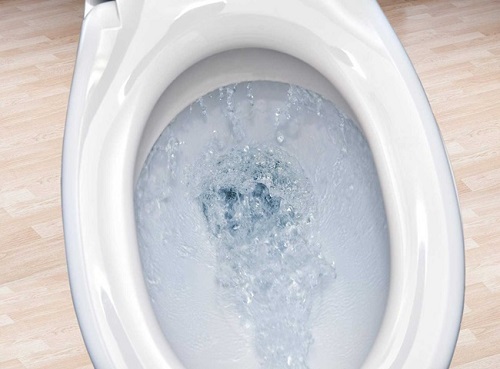
Unclogging with a Clothes Hanger
If you don’t have any tools or chemicals on hand, you can use a clothes hanger to clear the blockage. It can easily maneuver and push away objects such as sanitary pads and toilet paper.
Step 1: Prepare a thin aluminum or iron clothes hanger and straighten it out.
Step 2: Insert the straightened hanger into the toilet as far as you can, until you feel it has reached the source of the clog. Use force to push or rotate the hanger, creating an impact on the obstruction. If the water starts draining, you have successfully unclogged your toilet.
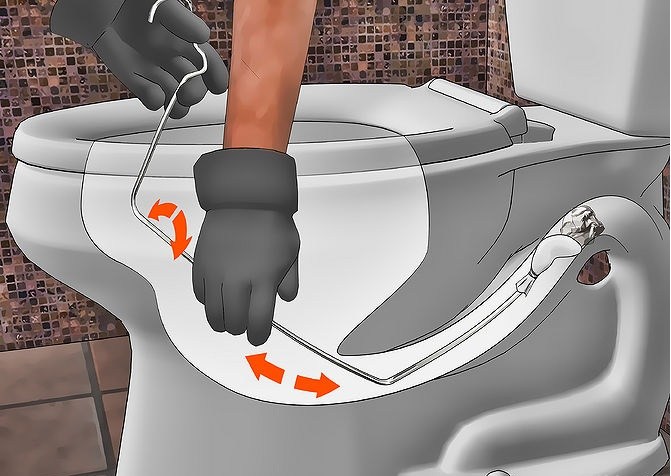
Unclogging with Baking Soda, Vinegar, and Hot Water
While this combination of baking soda, vinegar, and hot water may be unfamiliar to some, it is quite popular among others for effectively clearing toilet clogs.
Step 1: Prepare 500g of baking soda and 3 liters of boiling water, along with a container.
Step 2: Mix the baking soda and vinegar in the container, stirring thoroughly. Pour this mixture into the toilet bowl.
Step 3: Do not flush immediately. Wait for 5-7 hours or even overnight to allow the mixture to soak and penetrate the waste, causing it to break down.

Unclogging with Coca-Cola or Pepsi
Coca-Cola and Pepsi are familiar soft drinks that can be found at any beverage stall. They are also useful for clearing toilet clogs due to the presence of various acids in their formulations.
Step 1: Prepare one 1.5-liter bottle each of Coca-Cola and Pepsi, and pour both into the toilet bowl.
Step 2: Do not flush immediately. Wait for about 2 hours to allow the acids in the drinks to dissolve the waste.
Step 3: After the waiting period, flush the toilet with hot water to ensure effective unclogging.
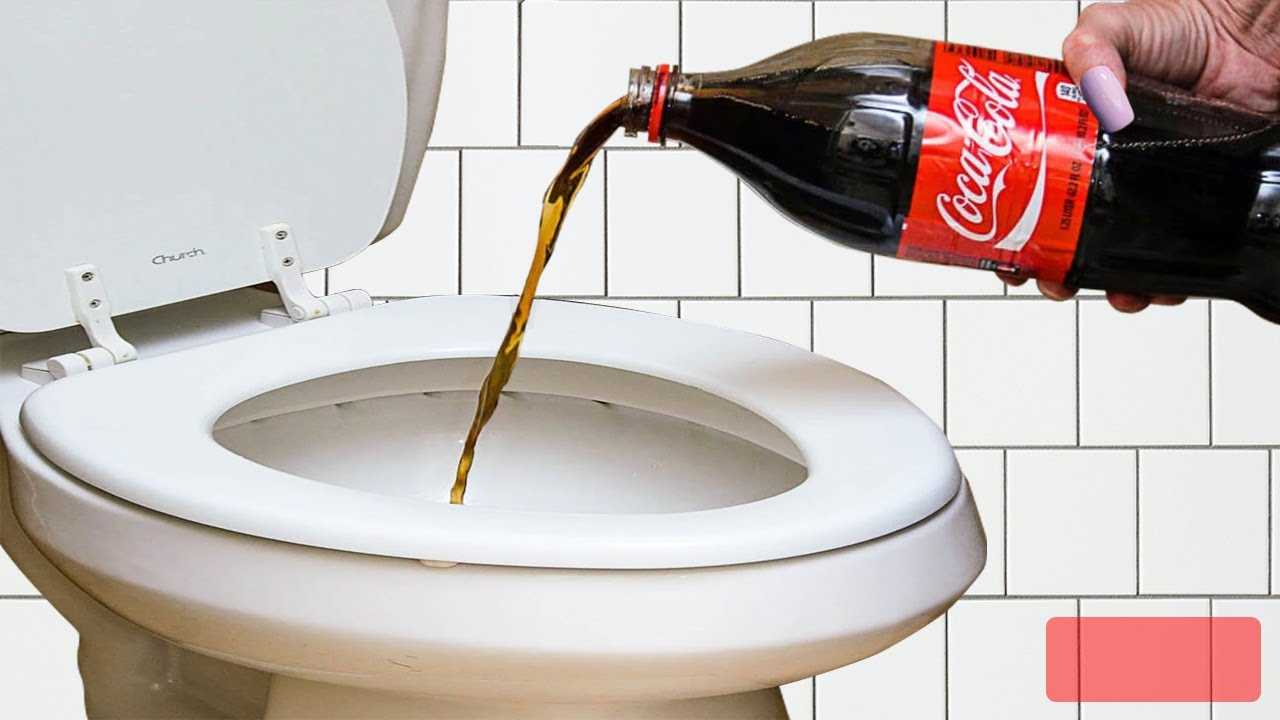
Unclogging with Adhesive Tape or Plastic Wrap
Adhesive tape and plastic wrap are common household items that can be used to unclog a toilet. Here’s how:
Step 1: Prepare plastic wrap and a roll of adhesive tape. Cover the toilet bowl with the plastic wrap and secure it with the tape. For better results, apply 2-3 layers.
Step 2: Flush the toilet multiple times to clear the waste. The pressure of the water in the bowl will be increased due to the plastic wrap.
Step 3: As the plastic wrap starts to inflate, press down on it to create air pressure that will push down and clear the obstruction in the toilet.

Unclogging with Dish Soap
Dish soap, a common household item, can be used in conjunction with hot water to effectively and economically clear a clogged toilet.
Dish soap contains cleaning agents that help break down and clear waste. When combined with hot water, it melts away clogs and the powerful water pressure helps flush away the debris.

Unclogging with Ice Cubes
Ice cubes are often used in toilets to eliminate odors, but they can also effectively clear clogs. As the ice melts, it cools down the toilet bowl, causing obstructions to contract and slip down the drain.
Step 1: Prepare 1-2 kg of ice cubes and a few slices of lemon, and put them in the toilet bowl.
Step 2: Wait for the ice to melt completely and for the toilet bowl to cool down. Then, flush the toilet to check if the clog has been cleared.

Unclogging with a Plastic Bottle
A plastic bottle can be used to effectively clear a clogged toilet. Follow these steps:
Step 1: Remove any standing water from the toilet bowl.
Step 2: Prepare warm water and a plastic bottle. Pour the warm water into the bottle.
Step 3: Place your thumb over the opening of the bottle and insert it into the drain hole at the bottom of the toilet bowl (remember to wear gloves for this step).
Step 4: Remove your thumb and squeeze the bottle to force the water inside to flow down the drain, creating pressure to clear the clog.
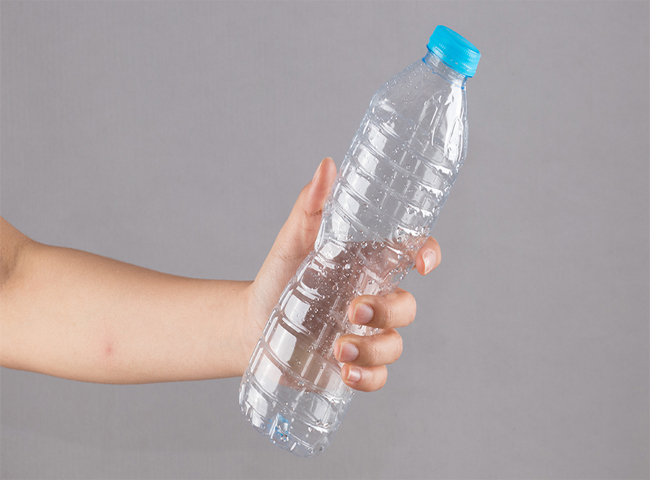
Unclogging with a Plunger (Piston)
The plunger, also known as a piston, is considered the most effective tool for clearing toilet clogs.
Step 1: Flush the toilet.
Step 2: Position the plunger accurately over the drain hole.
Step 3: Use force to push the plunger down into the drain hole repeatedly, about 6-7 times, and then lift it up decisively.
Step 4: Flush the toilet again to clean and clear any remaining waste.

Unclogging with a Coil Spring
A coil spring is a quick and efficient way to clear a clogged toilet without spending too much time on the task.
Step 1: Hold the coil spring by its handle and insert the spring end into the toilet’s drain pipe, twisting it back and forth.
Step 2: As you twist the spring, it will break down soft obstructions like waste matter quickly and effectively.

Unclogging with Specialized Stickers
Specialized stickers work similarly to plastic wrap and can effectively clear a clogged toilet.
Step 1: Remove the plastic covering from the sticker and apply it to the inside of the toilet bowl.
Step 2: Flush the toilet. When you see the sticker inflate, press down on it to create water pressure.
Step 3: Once the waste has been cleared, remove the sticker and clean the toilet thoroughly.
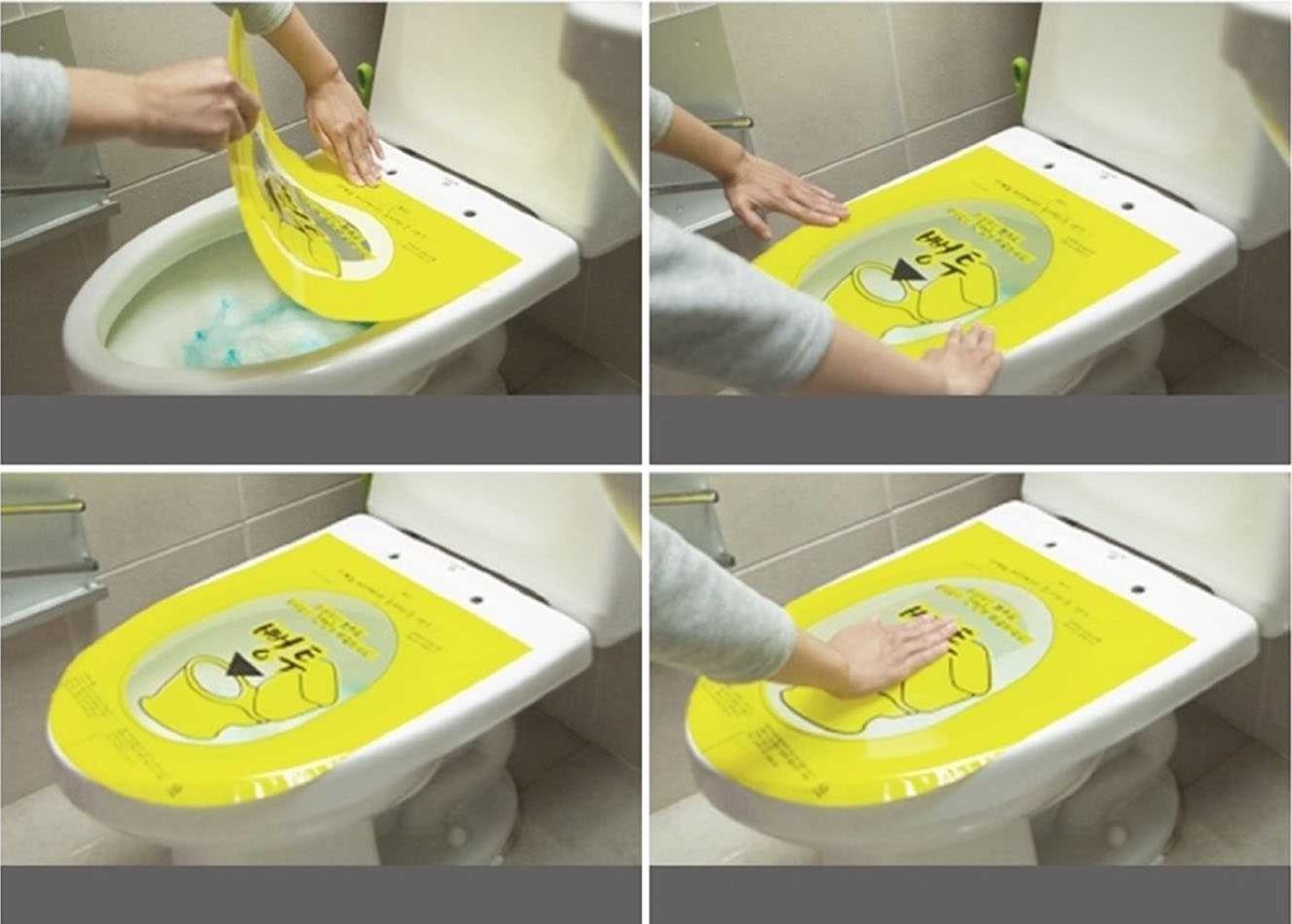
Unclogging with Specialized Chemical Powder
Specialized chemical powders such as Microphot, Bio, Sumo, and Hando are effective in clearing toilet clogs caused by moss, toilet paper, and other waste.
Step 1: Wear protective gear, including gloves, to avoid direct contact with chemicals and ensure your safety.
Step 2: Read the instructions on the chemical product carefully and pour the specified amount into the toilet.
Step 3: Wait for 4-6 hours to allow the chemical to penetrate and break down the waste.
Step 4: Flush the toilet and clean it afterward.



































